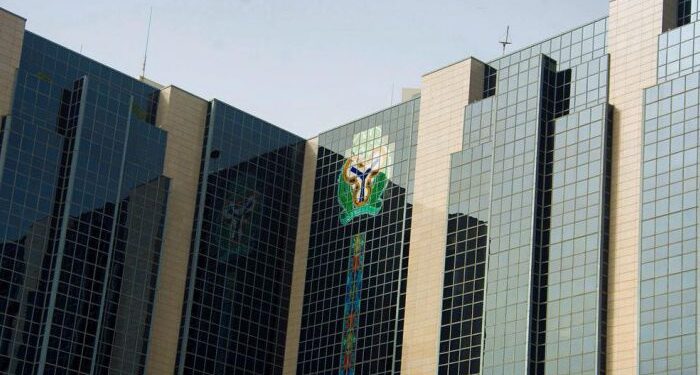The Central Bank of Nigeria (CBN) has announced a reduction in interest rates, a move it says is intended to stimulate economic activities and ease borrowing costs for businesses across the country. The development has been welcomed by segments of the private sector, although members of the Organized Private Sector (OPS) insist that the real impact will only be felt if the policy translates into improved access to credit and lower lending rates from commercial banks.
The CBN’s latest decision comes against the backdrop of declining inflation, a stabilizing foreign exchange market, and stronger foreign reserves, which have given policymakers room to ease monetary tightening. For over a year, businesses and households have contended with elevated borrowing costs following multiple hikes in the Monetary Policy Rate (MPR) aimed at curbing inflationary pressures. Now, with inflation showing signs of moderation and the economy gradually stabilizing, the regulator believes the time is right to strike a balance between price stability and growth stimulation.

For the OPS, the rate cut is a positive step but not a silver bullet. Representatives of manufacturers, traders, and service providers argue that while monetary easing is commendable, commercial banks must be compelled to align their lending practices with the central bank’s directive. They point out that many businesses, especially small and medium-sized enterprises (SMEs), remain locked out of the credit market due to prohibitive interest rates, stringent collateral requirements, and the high-risk perception of lending to smaller firms.
The Manufacturers Association of Nigeria (MAN) and the Nigerian Association of Small and Medium Enterprises (NASME) have called for deliberate interventions to ensure that the lower interest rates feed directly into cheaper credit for producers. They argue that affordable financing is crucial at a time when businesses are grappling with rising energy costs, foreign exchange constraints, and sluggish consumer demand. Without access to cheaper funds, the OPS warns, the policy shift may not deliver the desired economic impact.
The Nigerian economy has been battling structural challenges, and the private sector has borne the brunt of high borrowing costs in recent years. Many manufacturers have had to scale down production or operate below capacity, while others have resorted to raising funds through alternative and often costlier sources. Stakeholders believe that with inflation easing and the naira showing some signs of recovery, the interest rate cut must be accompanied by targeted credit relief packages that prioritize job creation and industrial growth.
Analysts say the CBN’s decision reflects a broader strategy to inject fresh momentum into the economy after months of aggressive tightening. Lower interest rates are expected to encourage consumer spending, boost investments, and support key sectors such as manufacturing, construction, and agriculture. However, some warn that if credit does not flow effectively to businesses, the benefits may remain muted. For the OPS, beyond monetary easing, what is required is a coordinated framework that aligns fiscal and monetary policies to foster growth.
The recent stability in foreign exchange inflows, coupled with improved reserves, has provided a cushion for policymakers to take calculated risks on rate adjustments. With inflation trending downward for several months in a row, there is cautious optimism that the easing cycle could support Nigeria’s recovery from sluggish growth patterns. The National Bureau of Statistics (NBS) recently reported stronger GDP growth in the second quarter, partly boosted by service-driven sectors such as finance and telecommunications. A more favorable lending climate, stakeholders argue, could extend this momentum to the real sector, where job creation potential is higher.
Nevertheless, critics caution against excessive optimism. They note that Nigeria’s commercial banks often respond slowly to policy changes, and lending rates may not fall immediately. For instance, banks could maintain higher rates due to perceived risks in the lending environment, particularly given defaults in previous cycles. To bridge this gap, the OPS is urging the CBN to consider sector-specific credit guarantees, refinancing windows for manufacturers, and concessional loans to SMEs as complementary measures to the general rate cut.
In addition, the OPS emphasizes the importance of tackling infrastructural bottlenecks that increase the cost of doing business. They argue that even with lower credit costs, issues such as poor power supply, inadequate transport infrastructure, and rising input costs will continue to erode competitiveness. Thus, the government must pair monetary easing with structural reforms to maximize the impact.
Looking ahead, economists predict that the rate cut could trigger increased activity in the equities market as investors seek higher returns compared to declining yields in fixed-income instruments. Similarly, consumer-facing industries could benefit from improved purchasing power if borrowing costs for households fall in tandem. However, the extent of these benefits will depend on how quickly and effectively banks transmit the new policy to end-users.
For now, the CBN has sent a clear signal that it is prepared to prioritize growth while maintaining vigilance on inflation and exchange rate stability. The OPS, on its part, has pledged to continue engaging with policymakers to ensure that businesses, particularly those in the productive sectors, are not left behind. Their message is clear: a rate cut is a good first step, but without affordable and accessible credit, the Nigerian private sector may struggle to translate the policy into tangible economic outcomes.
As Nigeria navigates this delicate transition from aggressive tightening to gradual easing, stakeholders across the economy are watching closely to see whether the central bank’s reforms will spark a new cycle of growth or remain another policy adjustment with limited real-sector impact. The coming months will be crucial in determining how deeply the rate cut reshapes borrowing behavior, business expansion, and overall economic confidence.
Support InfoStride News' Credible Journalism: Only credible journalism can guarantee a fair, accountable and transparent society, including democracy and government. It involves a lot of efforts and money. We need your support. Click here to Donate
